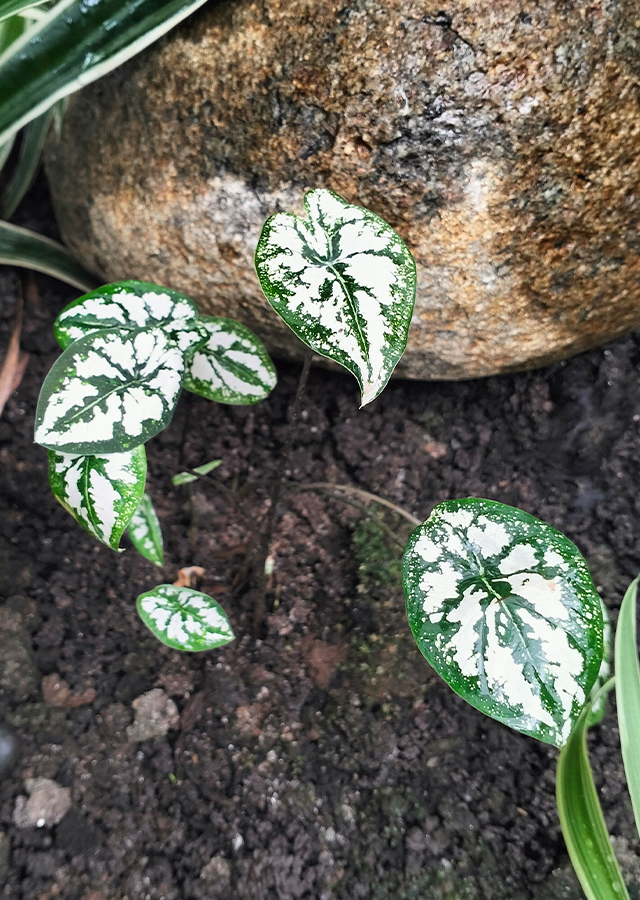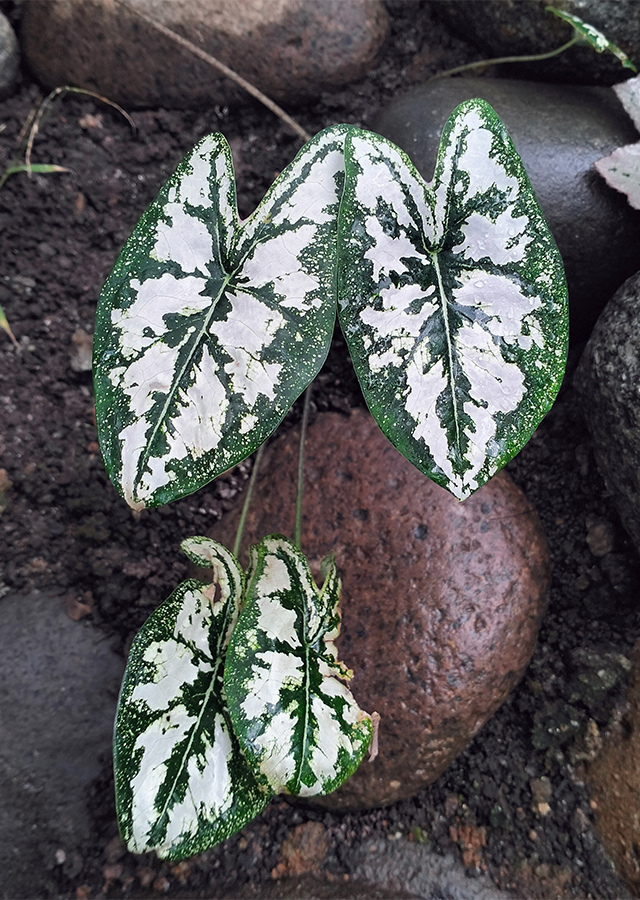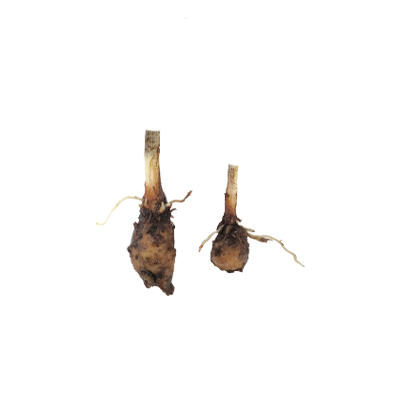Elephant's Ear
Caladium humboldtii (Raf.) Schott
Araceae
Location in our garden
Green House



Synonym
Podospadix humboldtii Raf.
Caladium argyrites Lem.
Caladium humboldtii var. myriostigma (K.Koch) Engl.
Caladium myriostigma K.Koch
Caladium schillerianum Stange
Habitus
Herbaceous. Annual herb, forming clumps, 35-45 cm high
Part Used
Tuber
Growing Requirements
Need Shade
Habitat
Forest
Shrublands
Terrestrial
Overview
The genus Caladium is believed to derive from a South American name. The species nickname "humboldtii" is named after Alexander von Humboldt (1769 - 1859), a German naturalist and explorer who documented plant species in Latin America. Apart from enjoying its beauty, several types of Caladium are believed to be able to cure disease. Burkil in a book entitled The Economic Product Of Thev Malay Peninsula mentions that C. humboldtii Schott (C. argyrites, Lem) is widely sold in Chinese herbal shops. All parts of the taro plant are poisonous when consumed, causing mouth and throat inflammation and stomachache. Contact with plant sap can cause skin irritation.
Vernacular Names
No data found on this. Need further research.
Agroecology
Elephants ear plant grows well in the shade or semi-shaded. Suitable soil conditions are moist soil with intensive watering. Grows best in a humid environment and watering should be sprayed.
Morphology
- Leaves - thin, arrow-shaped leaves, dark green margins with irregular white blotches (10 - 14 cm long, 4 -7 cm wide). Leaves are borne on long stalks (10 - 25 cm long) without stems.
- Flowers - this species does not produce flowers or fruit in cultivation.
Cultivation
This slow growing species is easy to cultivate. The bulbs should be planted to a depth of twice their height in well-drained potting soil and kept moist. Fertilize regularly with NPK 8-8-8 fertilizer. This plant is susceptible to attack by mealybugs, spider mites and aphids, and is susceptible to root rot, leaf spot and leaf burn. Leaf spot is a mild fungal disease that causes brown spots, infected leaves should be removed. Leaf burn is browning along the leaf margins that results from dehydration and excess sun or fertilizer. Propagation is done by dividing the tubers.
Chemical Constituents
No data found on this. Need further research.
Traditional Medicinal Uses
No data found on this. Need further research.
Part Used
Reference Sources
- Royal Botanic Gardens, Kew. Plants of the World Online: Caladium humboldtii (Raf.) Schott. https://powo.science.kew.org/taxon/urn:lsid:ipni.org:names:86359-1/general-information. 27-03-23.
- Flora Fauna Web. 2023. Caladium humboldtii Schott. https://www.nparks.gov.sg/florafaunaweb/flora/1/7/1744. 27-03-23.

